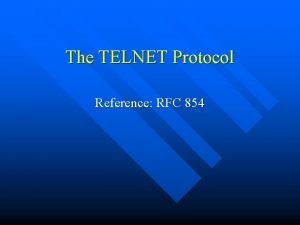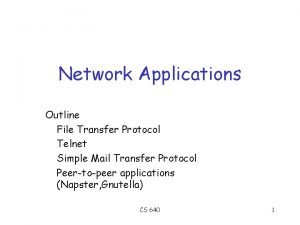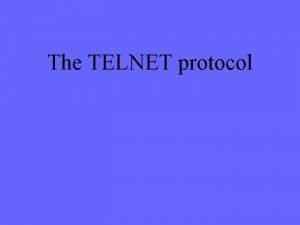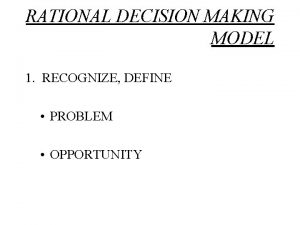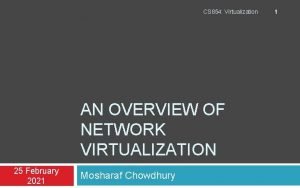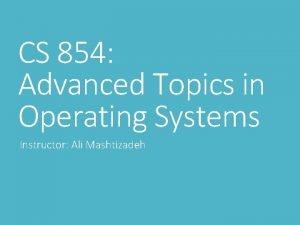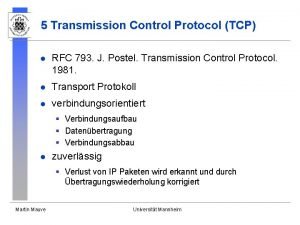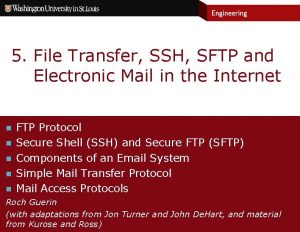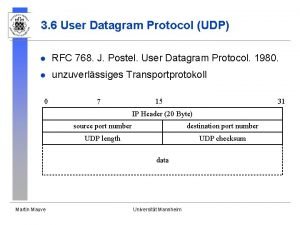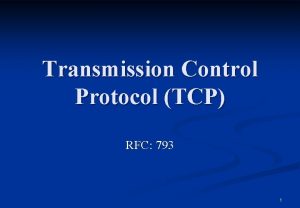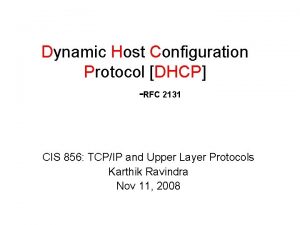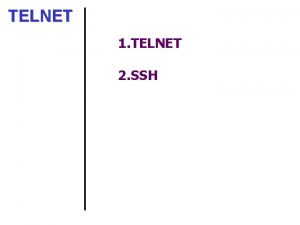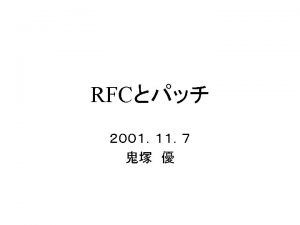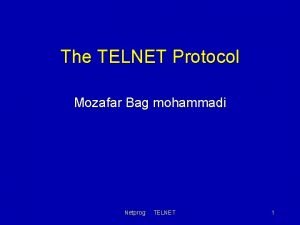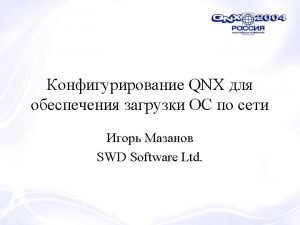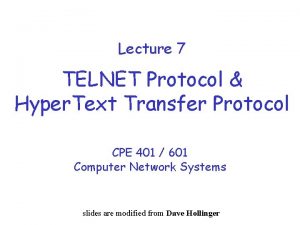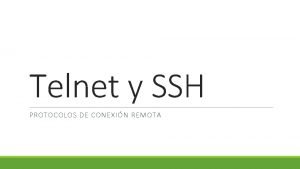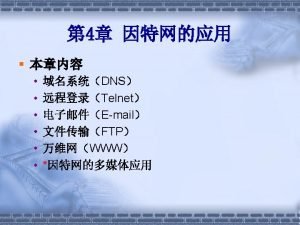The TELNET Protocol Reference RFC 854 TELNET vs














- Slides: 14

The TELNET Protocol Reference: RFC 854

TELNET vs. telnet TELNET is a protocol that provides “a general, bi-directional, eight-bit byte oriented communications facility”. n telnet is a program that supports the TELNET protocol over TCP. n Many application protocols are built upon the TELNET protocol. n

The TELNET Protocol TCP connection n data and control over the same connection. n Network Virtual Terminal n negotiated options n

Network Virtual Terminal intermediate representation of a generic terminal. n provides a standard language for communication of terminal control functions. n

Network Virtual Terminal Server Process NVT TCP

Negotiated Options All NVTs support a minimal set of capabilities. n Some terminals have more capabilites than the minimal set. n The 2 endpoints negotiate a set of mutually acceptable options (character set, echo mode, etc). n

Negotiated Options The protocol for requesting optional features is well defined and includes rules for eliminating possible negotiation “loops”. n The set of options is not part of the TELNET protocol, so that new terminal features can be incorporated without changing the TELNET protocol. n

Option examples Line mode vs. character mode n echo modes n character set (EBCDIC vs. ASCII) n

Control Functions TELNET includes support for a series of control functions commonly supported by servers. n This provides a uniform mechanism for communication of (the supported) control functions. n

Control Functions n Interrupt Process (IP) – suspend/abort process. n Abort Output (AO) – process can complete, but send no more output to user’s terminal. n Are You There (AYT) – check to see if system is still running.

More Control Functions n Erase Character (EC) – delete last character sent – typically used to edit keyboard input. n Erase Line (EL) – delete all input in current line.

Command Structure All TELNET commands and data flow through the same TCP connection. n Commands start with a special character called the Interpret as Command escape character (IAC). n The IAC code is 255. n If a 255 is sent as data - it must be followed by another 255. n

Looking for Commands Each receiver must look at each byte that arrives and look for IAC. n If IAC is found and the next byte is IAC - a single byte is presented to the application/terminal. n If IAC is followed by any other code - the TELNET layer interprets this as a command. n

Command Codes IP n AO n AYT n EC n EL n 243 244 245 246 247 WILL 251 n WON’T 252 n DO 253 n DON’T 254 n IAC 255 n
